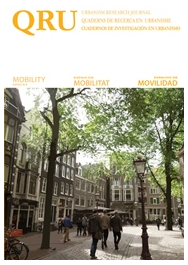Movilidad y derecho a la ciudad: las desigualdades generadas por el modo principal de movilidad en la ciudad de São Paulo
DOI:
https://doi.org/10.5821/qru.9602Abstract
Throughout the 20th century Sao Paulo was structured to guarantee automotive mobility while other modes of transportation were neglected. Among those modes, pedestrians have suffered the most, for remaining on the margin of planning. This article describes how the mobility model has been developed mainly for the automobile, analyses its impacts on the existing modes of transportation, and highlights the conditions and causes under which pedestrian circulation takes place in the city.Downloads
Issue
Section
License
Those authors who have publications with this journal, accept the following terms:
a. Authors will retain their copyright and guarantee the journal the right of first publication of their work, which will be simultaneously subject to the Creative Commons CC BY-NC-ND-4.0 recognition license that allows third parties to share the work provided that its author and its first publication are indicated in this journal, but they cannot be changed or used commercially.
b. Authors may adopt other non-exclusive license agreements for the distribution of the version of the published work (eg: deposit it in an institutional telematic archive or publish it in a monographic volume) provided that the initial publication in this journal is indicated.
c. Authors are allowed and recommended to disseminate their work through the Internet (e.g. in institutional telematic files or on their website) before and during the submission process, which can lead to interesting exchanges and increase citations. of the published work. (See The effect of open access).













